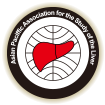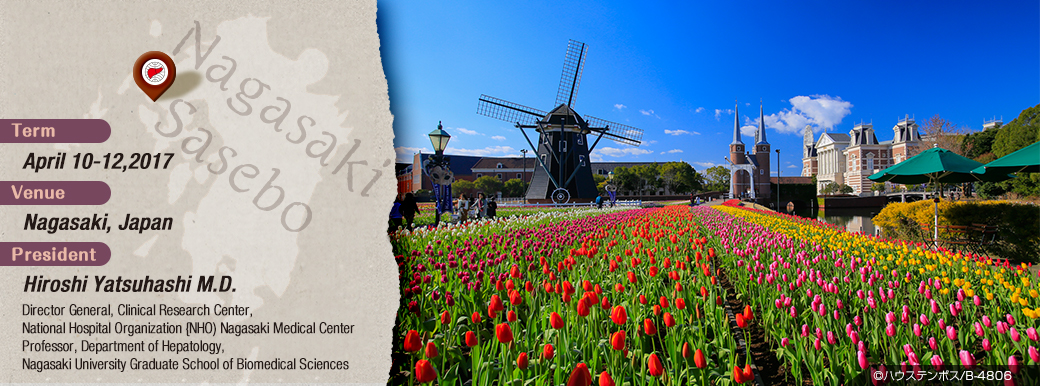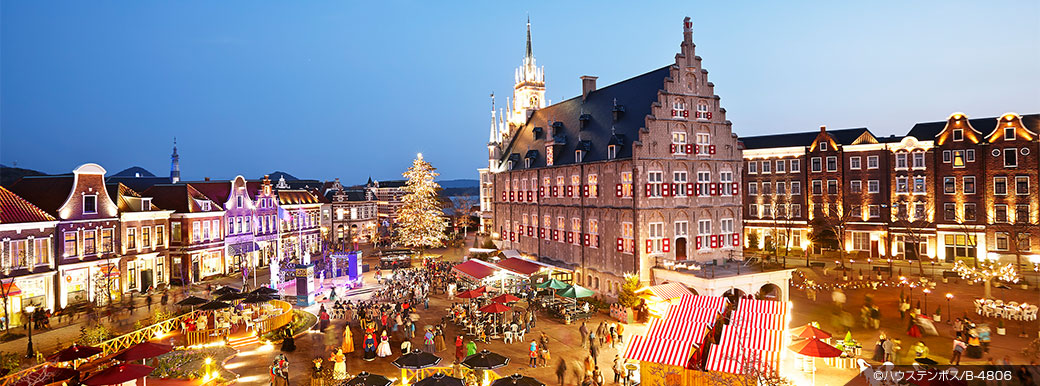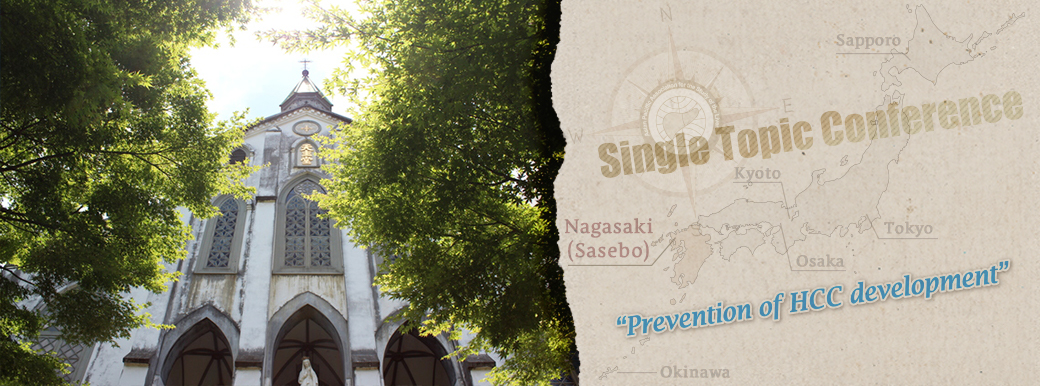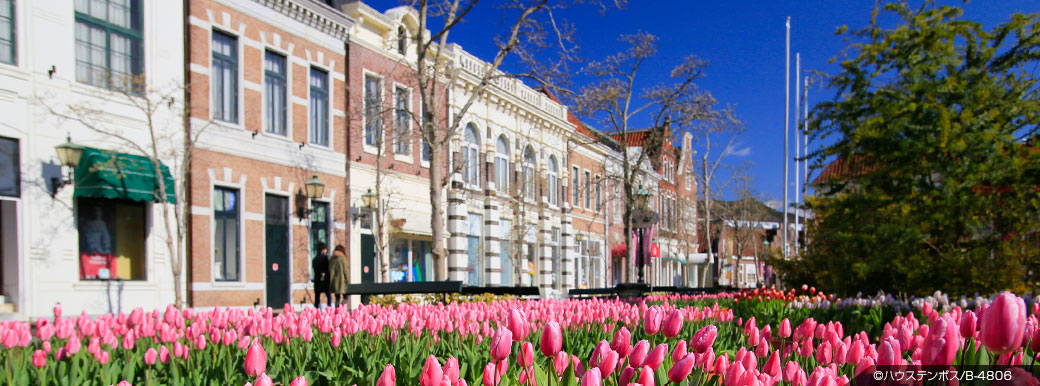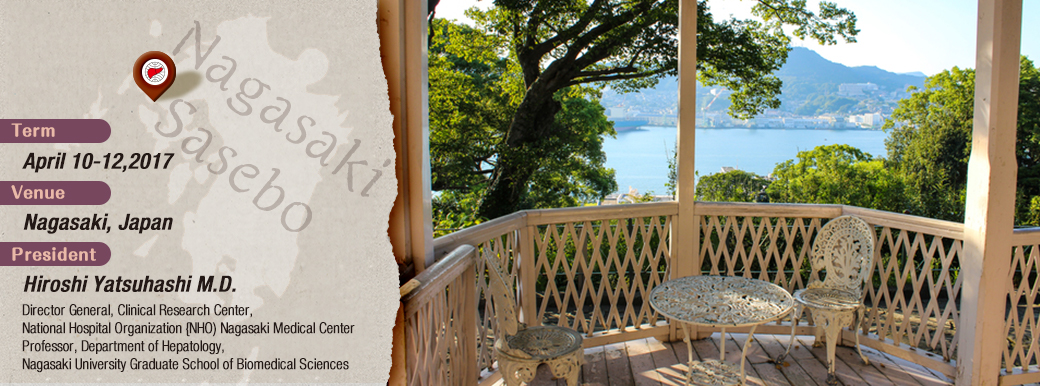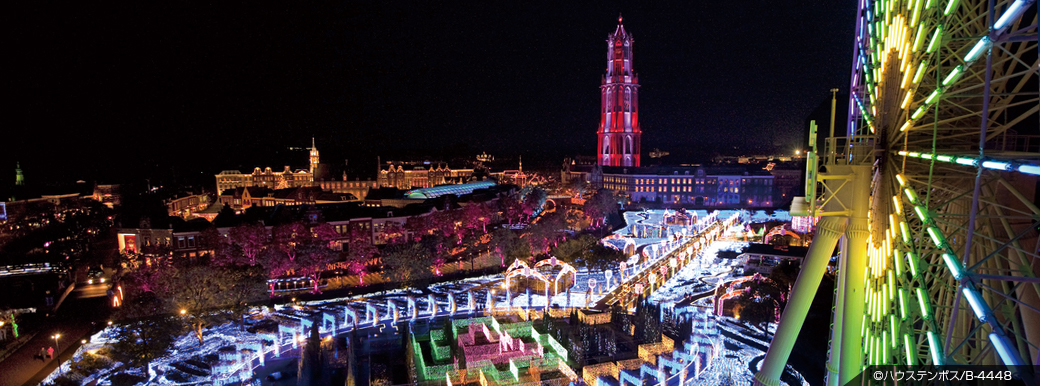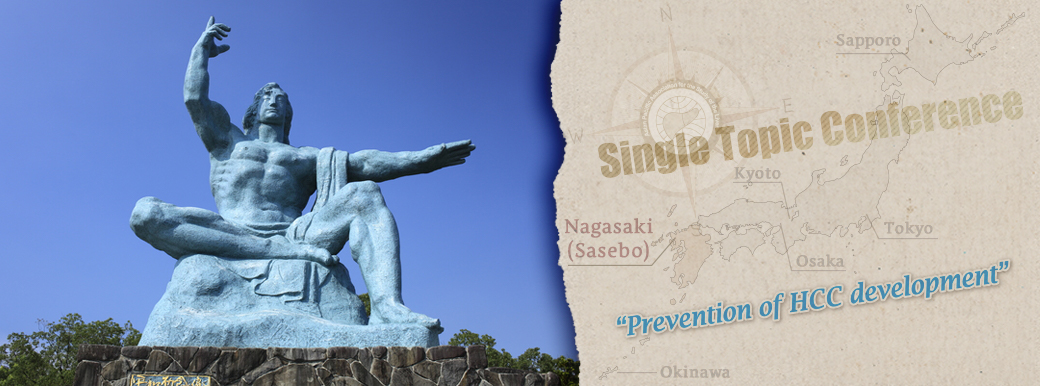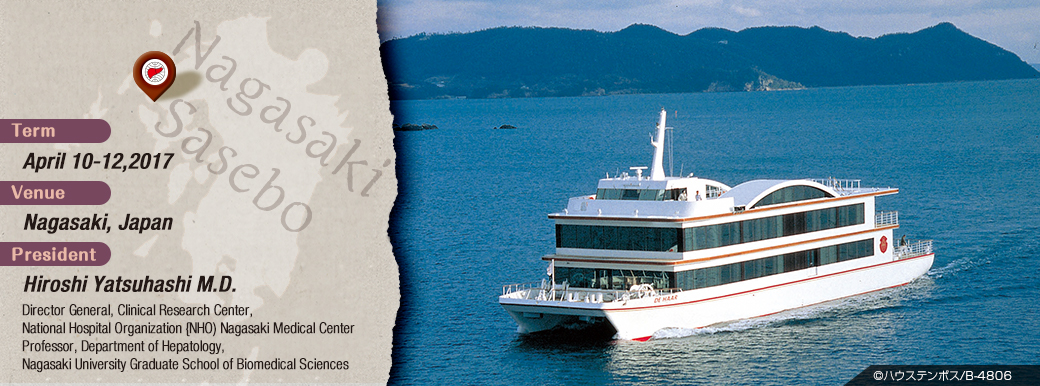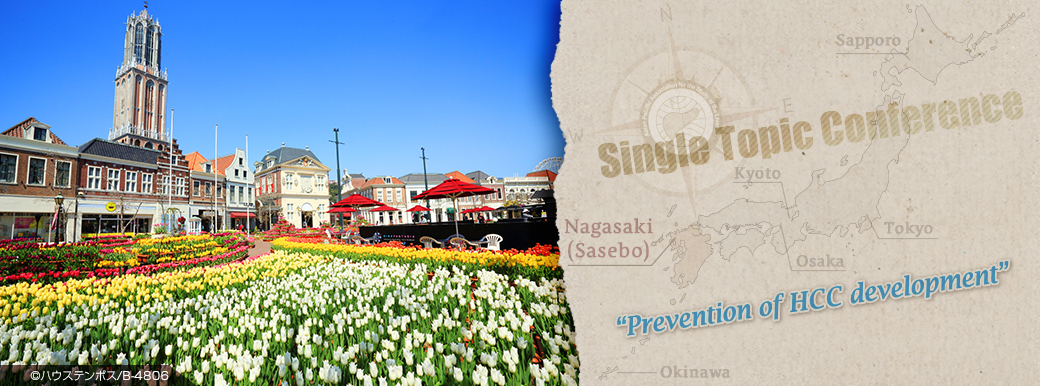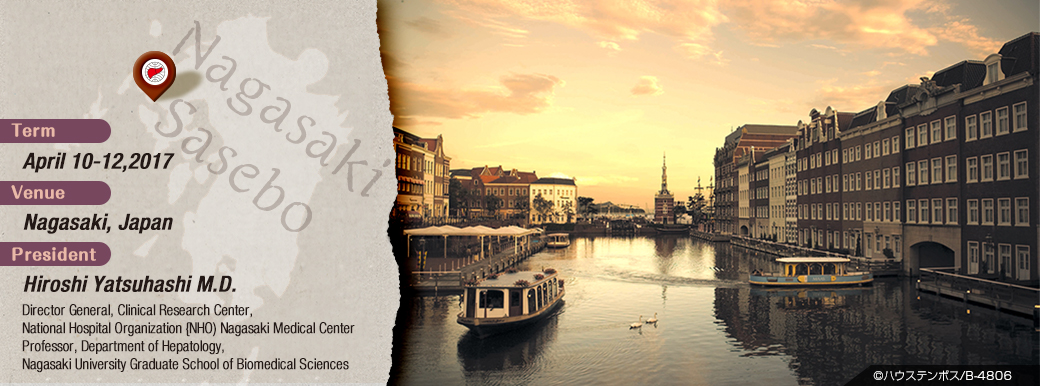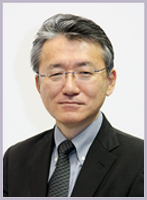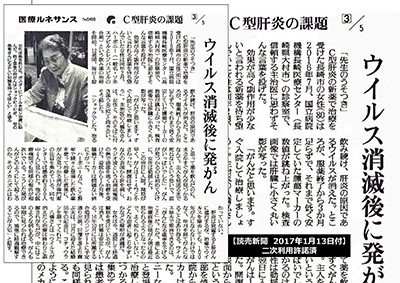Welcome Message
APASL STC in Nagasaki has been successfully held.
The organizer would like to express sincere gratitude to all the support for this conference.
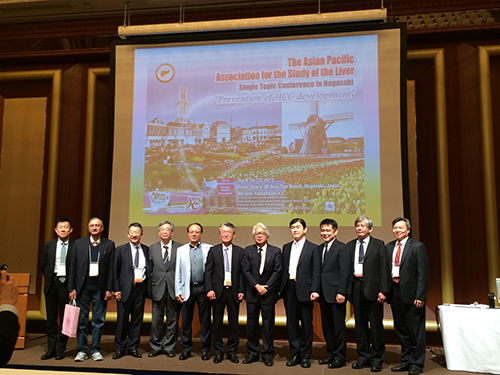
先日2017年1月13日の読売新聞で、SVR直後に肝癌が新規に発生した私の患者さんについて紹介されました。DAA治療直後の発癌例は、IFN治療とは明らかに異なる発癌様式、患者背景因子、病態が異なるという印象を持っています。各施設のDAA治療後の発癌例の個々の分析は、今後重要になってくると思います。
八橋 弘
The article is the “Yomiuri Shimbun” Newspaper (in Japanese) published on January 13, 2017, it is about my patient whom liver cancer(HCC) occurred newly just after SVR. As for the cancer-causing example just after the DAA treatment, the cancer-causing style, background's factors, and the condition of a patient is clearly different from the IFN treatment.
I think that the cancer-causing individual analyses after the DAA treatment of each institutions will become important in future.
Jan. 2017
Hiroshi Yatsuhashi
Why I chose the prevention of HCC
as a theme at NAGASAKI-STC conference?
With the recent development of DAAs therapy for hepatitis C, it is now possible to achieve a high rate of HCV elimination, i.e. SVR, in patients with hepatitis C, as well as nucleic acid analog treatment for the hepatitis B enabled high rate and reliable suppression of HBV proliferation in hepatitis B patients.
However, even if SVR is achieved after treatment with DAAs in patients with hepatitis C, there are some cases where HCC still occurs afterwards, and the existence of HCC with high malignancy of cells, which rapidly increases after SVR, has been a major problem in my recent experience. There are also some cases in which HCC still newly emerges during nucleic acid analog therapy in patients with chronic hepatitis B.
On the other hand, the incidence of HCC cases of Non-B Non-C has increased by 8 times compared to 20 years ago, according to our cohort study of the Kyushu region. In hepatocytes in which the hepatitis virus is absent, abnormalities in lipid metabolism may be involved in HCC development. I think that there may be intersections between the mechanism of HCC development in the patients with SVR after treatment of hepatitis C, the mechanism of HCC development during nucleic acid analogue treatment and the mechanism of HCC development in the patients with Non-B Non-C HCC.
Currently when the hepatitis virus has been eliminated and control has become possible, the most important thing is to further strengthen the suppression of HCC occurrence, and by justification of HCC risk and application in practical clinics, prediction of carcinogenesis. Japanese patients with chronic hepatitis C and B belong to a group with the highest carcinogenic risk in the world. I hope that presenting the results of basic research and clinical research on the prevention of HCC development in NAGASAKI-STC conference and considering future liver disease research will be milestones in this field.
Dec 2016
Hiroshi Yatsuhashi
Dear Colleagues,
On behalf of the Organizing Committee, it gives us great pleasure to invite you to Asian Pacific Association for the Study of the Liver Single Topic Conference (APASL STC), which will be held on April 10-12, 2017 in Nagasaki, Japan. We are delighted to welcome you to the beautiful, exotic city of Nagasaki in Kyushu Island of Japan.
Under the theme of “Prevention of HCC Development”, the conference the conference program will present high-quality content based on up-to-date information and cutting edge lectures by eminent researchers, in order to reconfirm the achievement of better basic and clinical practice in the field of Prevention of HCC Development.
The scientific program will consist of invited lectures, plenary sessions, symposia, and free papers on significant developments on the theme of Prevention and Management of HCC Development. The program will also provide the latest information and fresh ideas for hepatologists.
The conference encourages the submission of abstracts on research for oral and poster presentations through the conference website http://www.apaslstc2017nagasaki.org/ We would appreciate your submission and anticipate a large number of entries, which will stimulate active discussions.
Approximately 1000 delegates of experts from all over the world are expected to attend this conference. We are sure that this will provide an excellent opportunity for those of us in the Asian Pacific region to share the latest views, values, experience and practice, and greatly contribute to the progress of Prevention of HCC Development.
We are looking forward to welcoming you to Nagasaki in the season when tulips, daffodils and other flowers are in full bloom in a popular park situated just across the street from the conference venue.
With warmest regards,
May 2016
Hiroshi Yatsuhashi M.D.
President, APASL Single Topic Conference in Nagasaki
Director General, Clinical Research Center,
National Hospital Organization (NHO) Nagasaki Medical Center
Professor, Department of Hepatology,
Nagasaki University Graduate School of Biomedical Sciences
